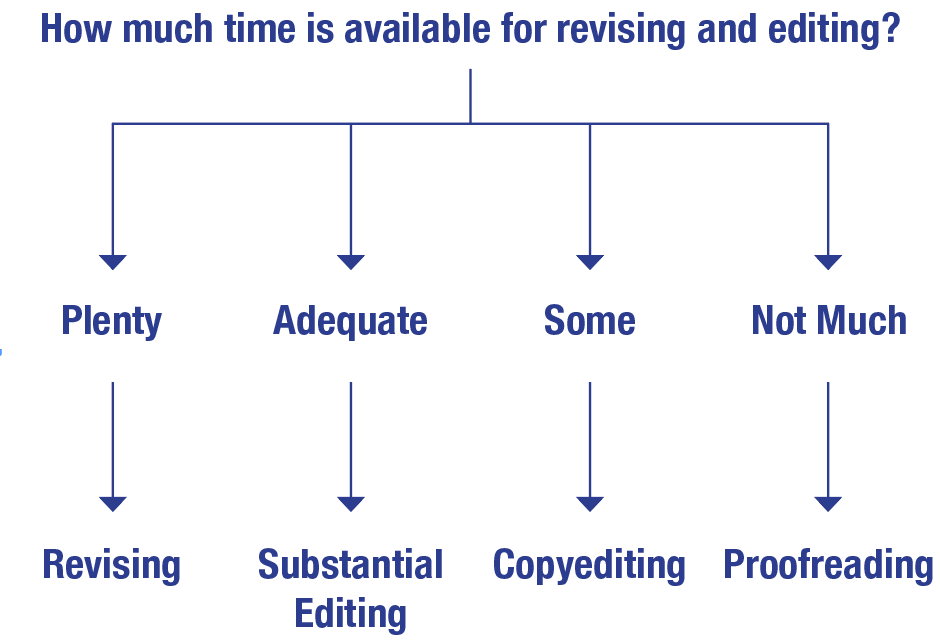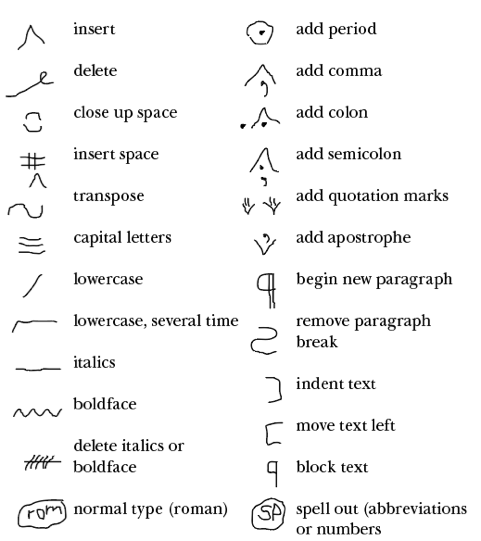By Katherine (Kit) Brown-Hoekstra | STC Fellow
Because technical communication is iterative, the review and editing processes are key steps in maintaining quality control during the content lifecycle. Most content development projects contain at least one review and editing step, and many projects contain all four of the levels of editing mentioned in Chapter 19 of Technical Communication Today, 5th edition, by Richard Johnson-Sheehan:
- Revising
- Substantive Editing
- Copyediting
- Proofreading

Content Lifecycle: Reviewing and Editing
Reviewing and editing happen at several points in the content lifecycle. Which level of edit you use depends on the stage of the project, the time you have available, the purpose of the content, and the level of quality needed. For example, you will spend significantly more time and effort on an instruction manual that will be used to calibrate life support systems on the International Space Station than you would on an email to a coworker.
Revising
As you begin to develop the content, you typically review and rewrite it several times before sending it through the formal review and editing process. During this phase, you are checking your assumptions, verifying that you have all the information you need, ensuring that your content model makes sense for the context, audience (called readers in the book), and purpose, and making sure that the scope and subject of the content are at the right level. If you are creating global-ready content, you will also incorporate those principles into your writing and editing.
This task typically happens at the beginning of the process and often does not have a formal procedure associated with it. Instead, each writer develops a process that works for them, within the requirements of the style guide and content model. Early in your career, you might be assigned a mentor who can help you with this process. Once you have a few years of experience, you are typically expected to handle this on your own and to ask for input when you need it.
In addition, some revision will occur as you incorporate comments from each of the other editing levels.
Substantive Editing
Substantive editing is often the first formal review of your content and might involve both subject matter experts and a senior editor on your team. During this step, you are making sure that the content is complete and technically accurate, that the organization supports the purpose and facilitates clear communication, and that the design makes sense for the context and needs of the reader, as well as meeting corporate guidelines. You also often identify graphics that support the content and check that the content fits your content model.
In Technical Communication Today, the review process is called document cycling, which is just another way of describing the process of letting others comment on your work before it’s released.
Copyediting
Copyediting typically happens once you are happy with the structure and overall content (see Figure 2). With this step, you want to check consistency in headings, graphics, tables, and writing to make sure that the content makes sense at a paragraph and sentence level, and conforms to the style and terminology guidelines. For global-ready content, the editor looks for wording or content that might cause a problem for the localization team.

Some companies use a team editing process for this step, while others employ an editing team. During this step, it’s a good idea to track changes, so that you can easily revert to the original text and also so that you have a record of the change in case there are questions later. Tracking changes is especially important in regulated industries.
Proofreading
Proofreading is the final check before publication. At this stage, the editor should not be making major changes to the text, but rather looks for grammar, punctuation, spelling, and typographical errors. In some cases, this might also encompass a production edit to verify that the content publishes correctly.
For global-ready content or content that follows a controlled language specification, this step can also include using automated tools that verify that the content follows the strict terminology and grammar guidelines.
Usability Testing
Technical Communication Today touches on usability testing as part of the review and editing process. While usability testing is a discipline in and of itself, it is important for you to understand the basic types of tests:
- Read-and-locate tests: Participants must find five to seven pieces of information in your content. Typically, you establish a hypothesis about how long is should take to find the information. Then, you test the participants’ ability by videotaping them as they search and timing them. Based on the results, you might re-organize or clarify your content.
- Understandability tests: First, you establish your expected results by documenting your content’s purpose, main point, and three major pieces of information you expect the reader to retain. Then, the participants read the content, usually under a time limit to simulate actual conditions. After taking away the content, you test the participants’ ability to recall what they read.
- Performance tests: For these tests, you would create a scenario that requires the participants to use your content in context to perform an action, while you videotape them. Often, participants are asked to talk through their thought processes as they try to perform the task. This test can provide valuable insight not only about the content, but also about the product design.
- Safety tests: These tests can be challenging because you can’t ethically put participants at risk. The purpose of this type of test is to ensure that the warnings and cautions are adequate and to identify any areas where the participant could have a problem.
While you can conduct usability tests without a lot of special equipment, participants in usability tests should be representative of actual readers or users. Otherwise, your results might not be valid. When moving into a new market internationally, you might want to conduct usability tests to ensure that your product and content meet local expectations.
Mastery at the Foundation Level
At the CPTC-Foundation level, you should be able to name the levels of edit and the types of usability testing described in Chapter 19 of Technical Communication Today. You also need to understand why they are important to the content lifecycle and when you would use each one.
One of the challenges that experienced technical communicators have with taking the Foundation exam is that the terminology used in the book doesn’t always match the terminology used in the workplace. For the Foundation exam, make sure you understand the book’s terminology because that is what is used on the test.
Beyond the Foundation Certification
The specific criteria for the Practitioner and Expert certifications are still being defined. However, the certification process will expect you to demonstrate mastery of best practices for conducting reviews, for editing, and some practical experience with conducting simple usability tests.
Resources
STC Technical Editing SIG, https://www.stc.org/wiki/technical-editing-chapter-stc/.
STC Body of Knowledge, http://www.tcbok.org/.
Chicago Manual of Style, 17th edition. University of Chicago Press (expected publication date September 2017).
Grammar Girl blog, http://www.quickanddirtytips.com/grammar-girl.
Quesenberry, Whitney. 2011. Global UX: Design and Research in a Connected World. Morgan Kaufmann.
 KIT BROWN-HOEKSTRA is an STC Fellow and former Society president, accredited CPTC trainer, and principal of Comgenesis, LLC. She speaks at conferences worldwide and provides training on a variety of topics related to technical communication and localization conferences. She is currently editing The Language of Localization for XML Press, and plans a CPTC training workshop in Denver, CO, this summer. Her blog is www.pangaeapapers.com and her website is www.comgenesis.com.
KIT BROWN-HOEKSTRA is an STC Fellow and former Society president, accredited CPTC trainer, and principal of Comgenesis, LLC. She speaks at conferences worldwide and provides training on a variety of topics related to technical communication and localization conferences. She is currently editing The Language of Localization for XML Press, and plans a CPTC training workshop in Denver, CO, this summer. Her blog is www.pangaeapapers.com and her website is www.comgenesis.com.


